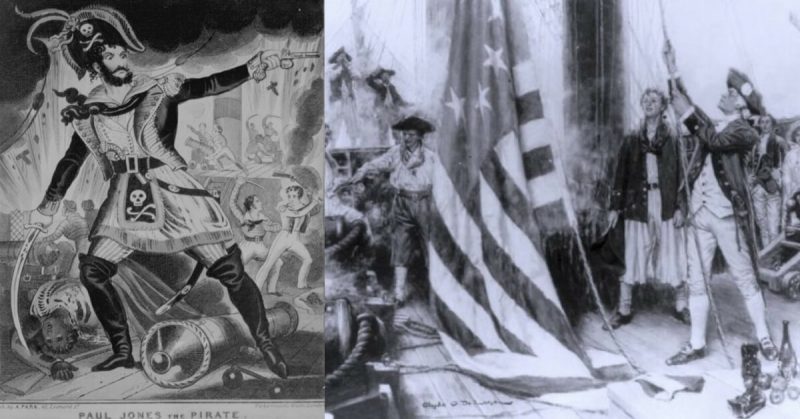Early in the morning of April 24, 1778 a strange ship lay at anchor just off of Carrickfergus, Ireland. HMS Drake, the nearest English ship sent a boat out to investigate, suspecting that this was simply some unannounced merchant ship. But when her boat never returned she realized it was none other than the Ranger, an American ship which had been raiding English shores for the past two weeks.
Ranger had been launched the year before. She was one of first warships to be built in the United States, which was embroiled in war for independence from the British Empire. Ranger was originally built for Captain John Roche, but the Continental Navy had instead put their money behind John Paul Jones, and he was in command when the ship launched on May 10, 1777.
Jones was a Scottish sailor born in 1747. Growing up near the sea he had saltwater in his blood, and began his career at the age of 13, sailing out of Whitehaven. He had a varied life at sea, being at first loved by his men, but later hated for being too cruel. Even as a civilian his maritime career led him into fights, death, and danger on a regular basis. He came to the Virginia Colony in 1770, and fell in love with the people there. He adopted the Americas as his new home, and when the Revolution began in 1775 he joined the fledgling Continental Navy. Despite his skill as a sailor he often chafed with higher ups, and was passed over for promotion and commands. But in 1777, the Navy needed a brave and reckless captain to bring the war to Britain’s shore, and they knew Jones was the only man for the job.

After preparing Ranger Jones set sail for France on November 1st 1777. While crossing the Atlantic he took two British merchant ships as prizes.Arriving in Brest in December of 1777 Jones began modifying his ship. He increased sail, strengthened the hull, and modified the outside to look like a British merchant. The hope was that they could patrol freely off the coast of England, attacking merchants and enemies at will. With his modification completed, he left Brest on April 10th, 1778, sailing to the North Channel, between Ireland and Scotland.
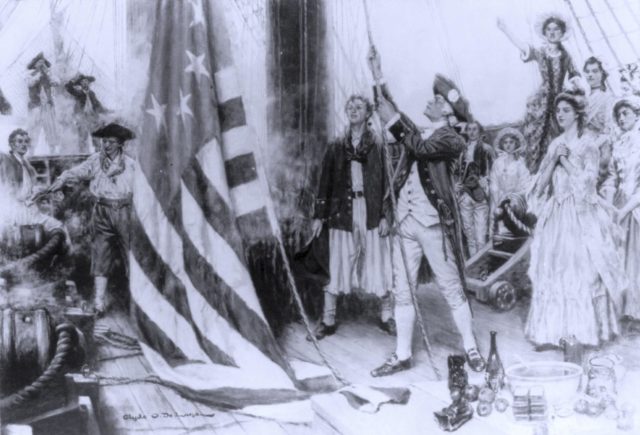
Over the next 10 days Ranger took two prizes, both British merchants. They were sent back down to Brest to be sold as prizes. But Jones had caught wind of the British Man o’ War, HMS Drake, in the port of Carrickfergus. Jones knew that if he was truly going to show the English that this new Continental Navy meant business he would have to defeat a warship. He laid out this plan to his crew, but they refused.
Ranger was manned by New England sailors, who were in it for the gold rather than the glory. His original plan was to draw out Drake and fight her in broad daylight. The crew didn’t care much for the political ramifications of this, instead they saw the dangers of rushing into battle against a skilled Royal Navy crew. In an attempt to reach middle ground Jones decided on a night raid.
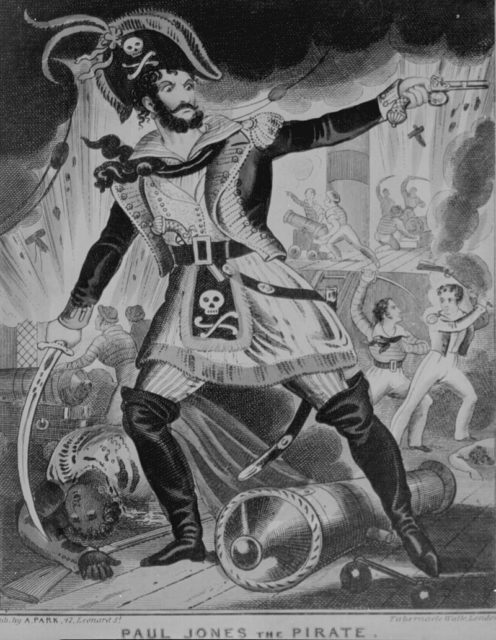
On the night of April 20th, the American ship slipped silently into Carrickfergus and pulled up close to HMS Drake. But one mutinous crew member, not wanting to go into the fight, let the anchor drop 100 yards away from the enemy, rather than pulling up to grapple with the British warship. Upon realizing the plan’s failure, and fearing discovery, Jones ordered the anchor raised and the ship to flee. They pulled back out to the North Channel.
On the 23rd Jones sailed to Whitehaven, where he had grown up, and landed two boats of troops. His officers had refused to join this raid, but he had mustered a small group of sailors who would go with him. Under the cover of darkness they burnt 3 British merchant ships, and destroyed many of the guns at the shore battery. But one of his crew alerted the locals to their presence, and they were forced to retreat back to Ranger. Jones realized his crew had no love for him and he needed to appease them if they were to continue the fight.
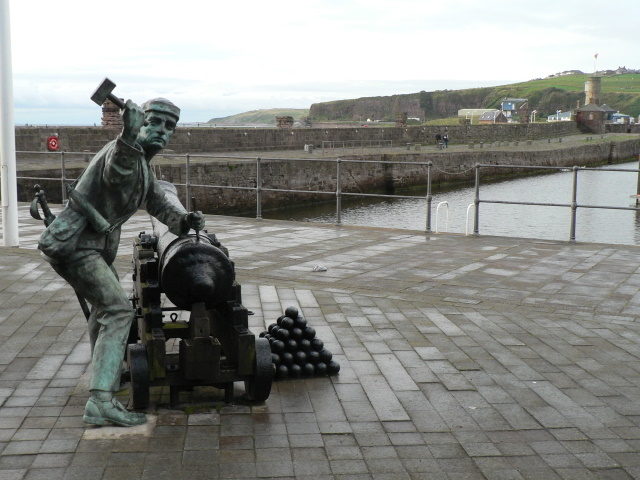
They sailed north to St. Mary’s Isle, near Kirkcudbright, home of the Earl of Selkirk. Hoping to capture the Earl and hold him for ransom, they found that he wasn’t home. Instead, the men stole as much silver as they could find, and feeling wealthy and flush once again, they were willing to fight for their captain.
As the sun rose on April 24th, 1778 the crew of the Drake sighted a strange merchant ship sitting out on the water, with no activity on board. The Captain knew that an American ship had been patrolling these waters, and was understandably wary. He sent out a small boat to investigate, with an officer, the acting gunner (the ship’s true gunner being ill), and 6 crew. Jones invited these men onboard to speak, where he immediately took them captive. He found out that the Drake was coming for him, and that she had taken on extra men to board and capture Ranger.
When his boat never returned the Drake’s captain realized who that strange merchant must be. This was confirmed when a new officer, Lieutenant William Dobbs, came on board that morning, with full information about Ranger. Drake set sail and slowly tacked out to meet the American. The wind was against him, and it was slow going for Drake, as they approached Ranger. Captain Jones began to taunt them through his speaking trumpet.
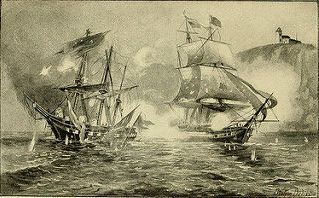
Finally they closed, and Jones quickly turned his ship unleashing a powerful broadside against the British. Over the next hour and five minutes an intense battle ensued, but it was largely one sided. The British guns were unstable, and tended to lean forward when loaded. This meant their shots would often miss, and those that hit rarely pierced Ranger’s hull. They were also low on packing paper for their muskets, meaning that each shot had be to painstakingly loaded individually. The Americans, on the other hand, were well prepared and organized, and kept up a dizzying blaze of fire.
After losing her Captain, Lieutenant, and many of her crew, the Drake finally had to surrender. But her colors had long since been blown away by the American fire. Her acting master instead waved his hat and screamed for surrender over the din of battle. The Americans had just taken their first military prize in British waters. From then on, no one doubted the ability of the small Continental Navy.
